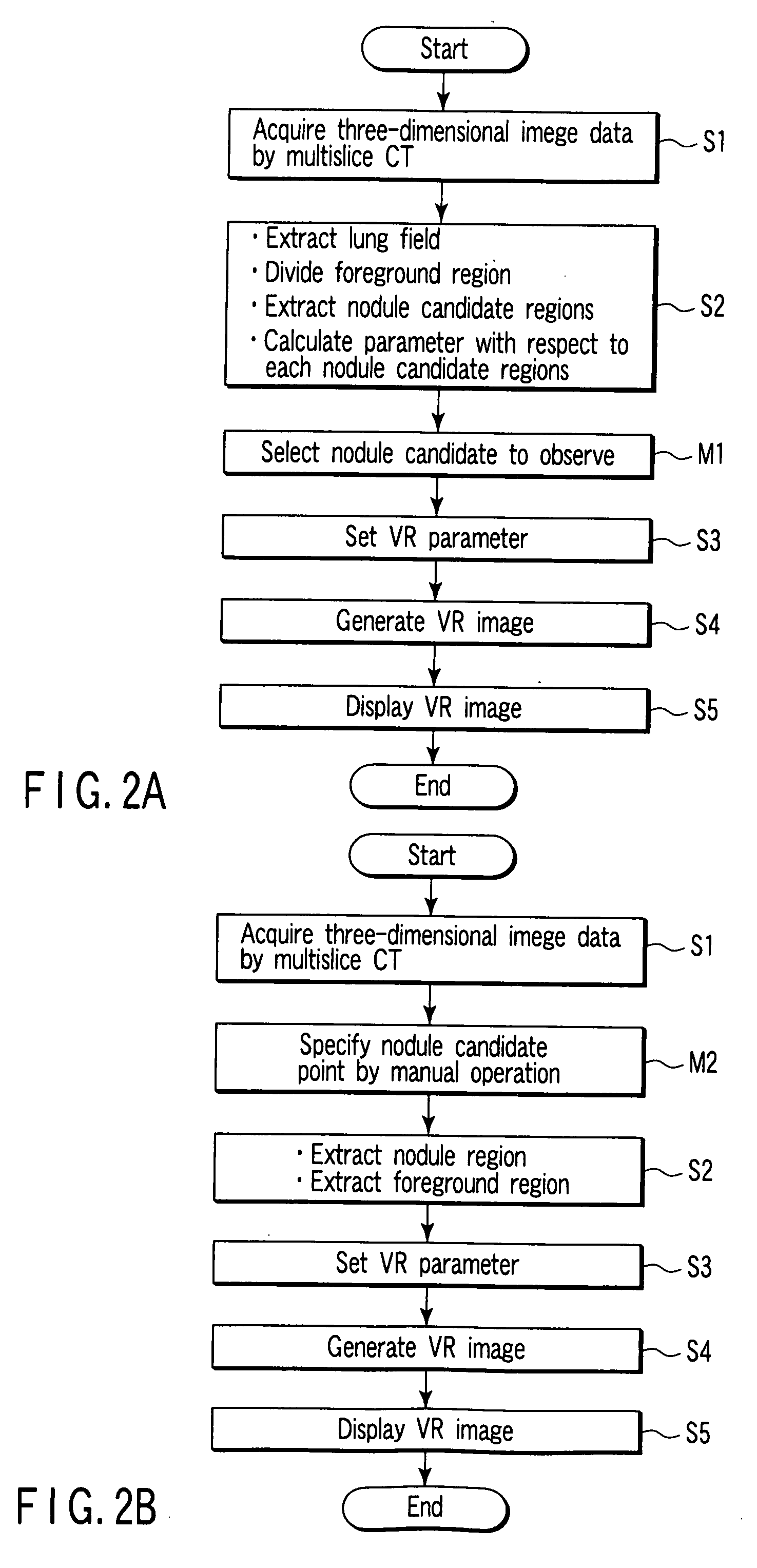Computer-aided imaging diagnostic processing apparatus and computer-aided imaging diagnostic processing method
a diagnostic processing and computer-aided imaging technology, applied in the direction of reconstruction from projection, tomography, instruments, etc., can solve the problems of difficult to obtain the volume rendering image desired by the user, the inability to use a screening technique, and the increase in the load required for radiogram interpretation
- Summary
- Abstract
- Description
- Claims
- Application Information
AI Technical Summary
Benefits of technology
Problems solved by technology
Method used
Image
Examples
first embodiment
[0054]FIG. 1 is a block diagram showing the arrangement of a computer-aided imaging diagnostic processing apparatus 1 according to this embodiment. Referring to FIG. 1, the computer-aided imaging diagnostic processing apparatus 1 comprises a control unit 10, image processing unit 12, display unit 14, operation unit 16, storage unit 18, transmission / reception unit 19, lung field extraction unit 17, foreground region division unit 20, and data analyzing unit 21.
[0055] The computer-aided imaging diagnostic processing apparatus according to this embodiment can use, for example, a general-purpose computer apparatus as basic hardware. The lung field extraction unit 17 and the data analyzing unit 21 can be implemented by causing a processor mounted in the above computer apparatus to execute imaging diagnostic processing programs. In this case, it suffices to implement the computer-aided imaging diagnostic processing apparatus 1 by installing the above imaging diagnostic processing program...
first modification
(First Modification)
[0084] The above embodiment has exemplified the case wherein an opacity curve which is a linear function is set as a typical example. However, an opacity curve can be defined by a desired function or curve sketching instead of a linear function. FIG. 19 shows another typical example of the opacity curve. It is preferable from the viewpoint of operability that a desired one of preset opacity curves can be selected by using a user interface like that shown in FIG. 20.
second modification
(Second Modification)
[0085] Performing predetermined operation makes it possible to change the VR parameter (opacity curve) set in accordance with the above embodiment to another setting. The contents of this operation will be described below with reference to a case wherein an opacity curve is a linear function.
[0086] An opacity curve as a linear function can be changed in accordance with two condition settings. One setting is the gradient of an opacity curve, and the other setting is the H.U. value which makes opacity=0.
[0087] FIGS. 21 to 24 each show an opacity curve having a gradient S1-1 and the VR image generated by using the opacity curve, which are obtained when the H.U. value which makes opacity=0 is changed every 100 [H.U.] (note, however, that the H.U. value is changed in units of 300 [H.U.] in the cases shown in FIGS. 23 and 24). In the case shown in FIG. 21 (the lower limit of the opacity is −750 [H.U.] with the gradient S1-1), many blood vessels around a nodule are d...
PUM
 Login to View More
Login to View More Abstract
Description
Claims
Application Information
 Login to View More
Login to View More - R&D
- Intellectual Property
- Life Sciences
- Materials
- Tech Scout
- Unparalleled Data Quality
- Higher Quality Content
- 60% Fewer Hallucinations
Browse by: Latest US Patents, China's latest patents, Technical Efficacy Thesaurus, Application Domain, Technology Topic, Popular Technical Reports.
© 2025 PatSnap. All rights reserved.Legal|Privacy policy|Modern Slavery Act Transparency Statement|Sitemap|About US| Contact US: help@patsnap.com



